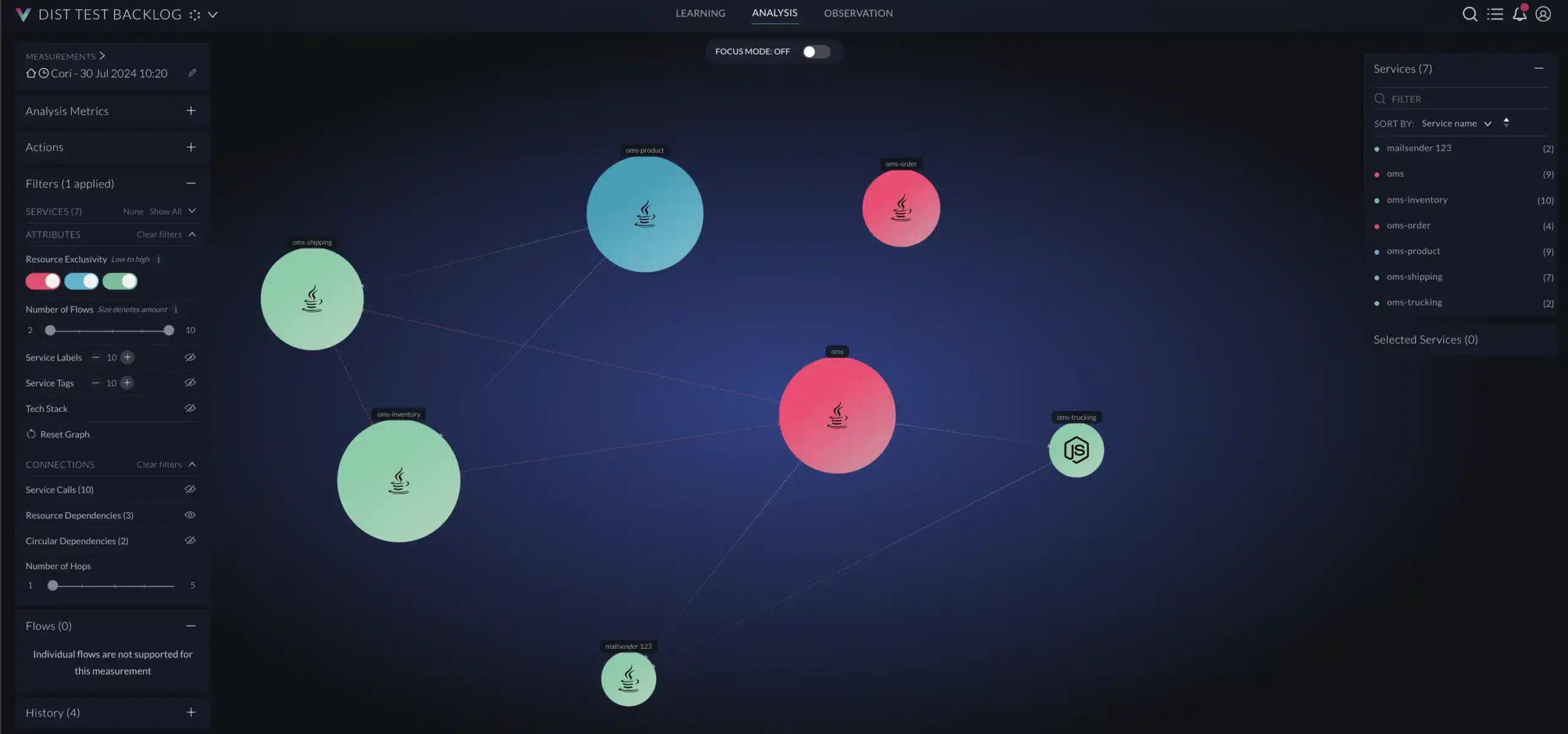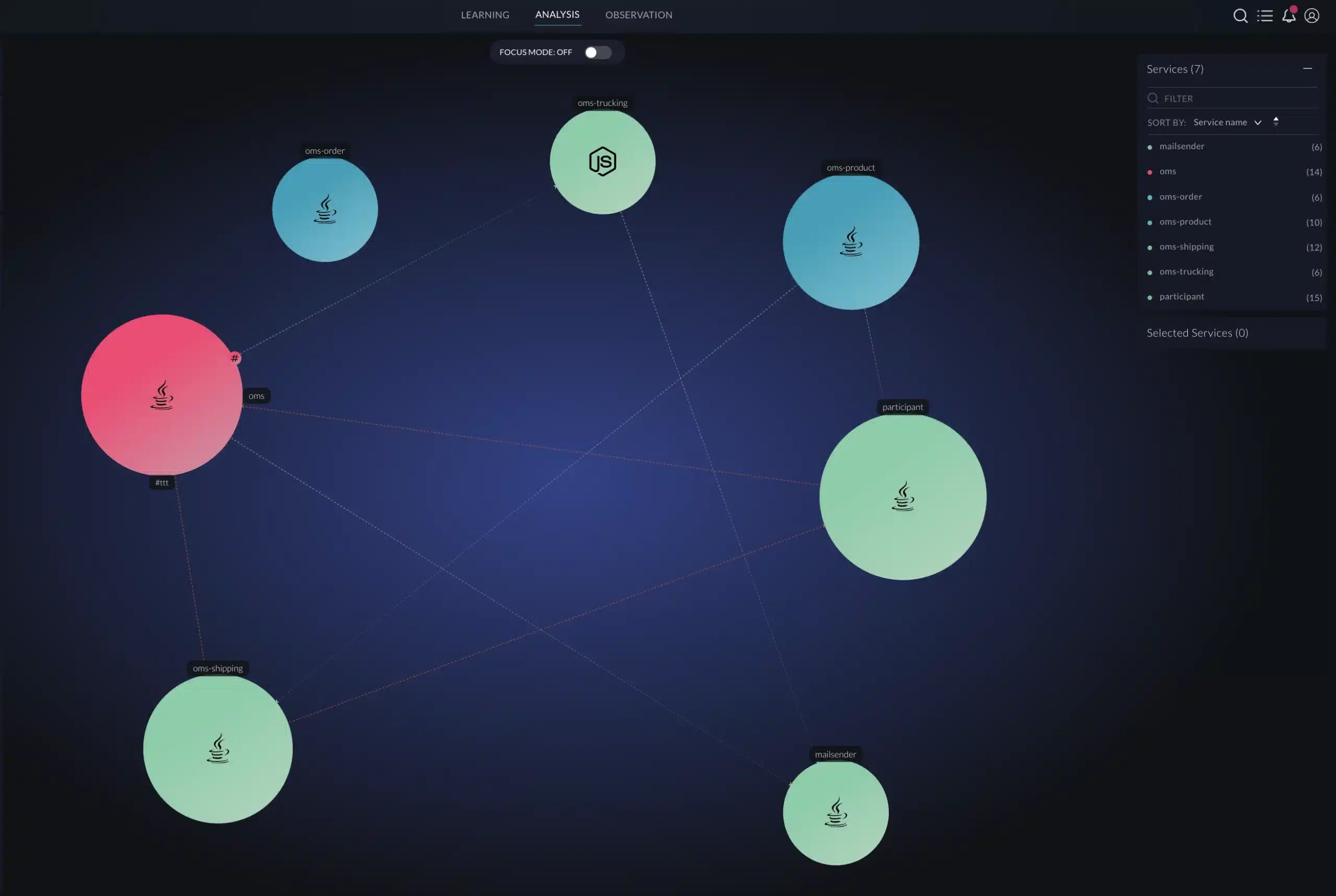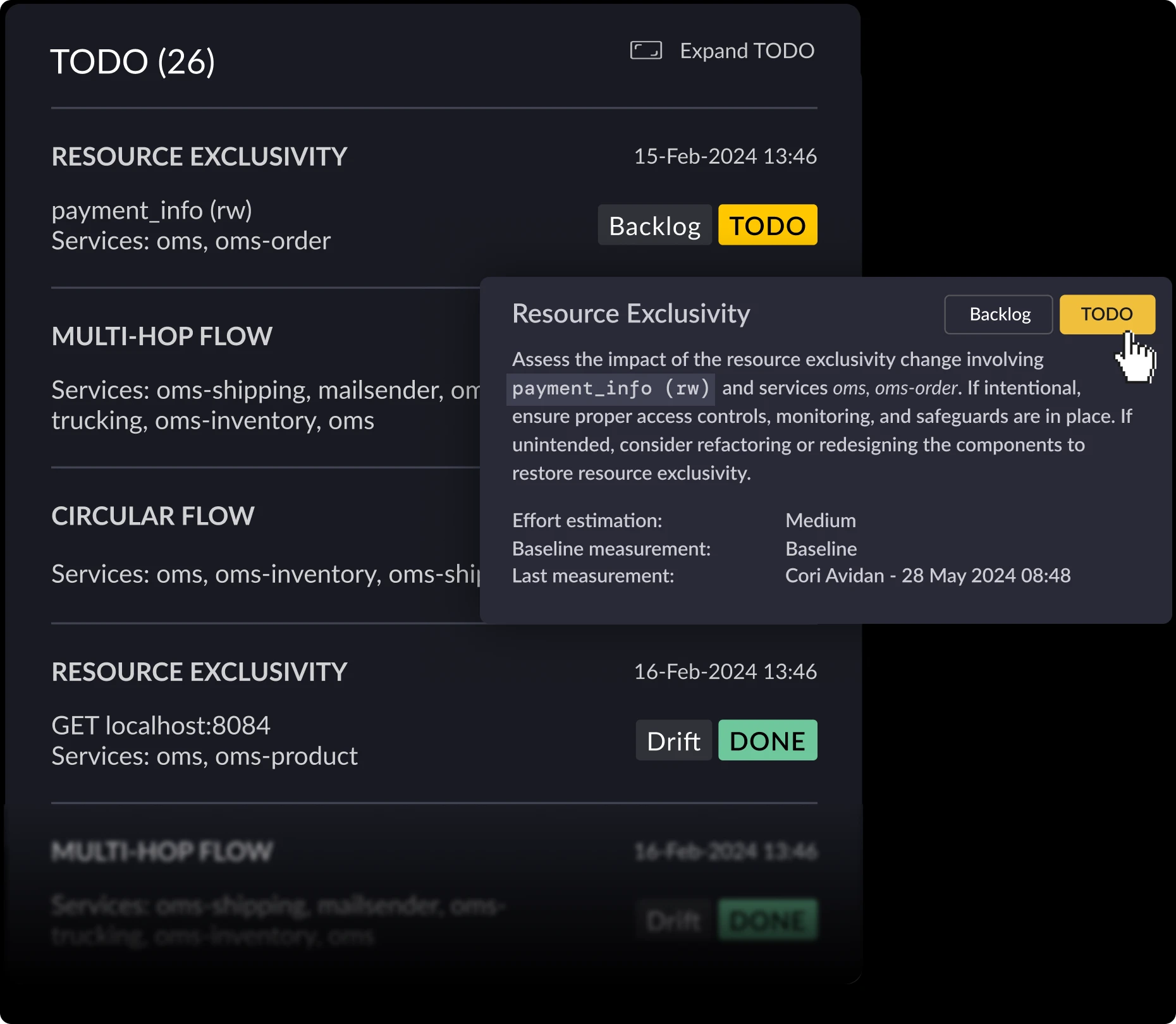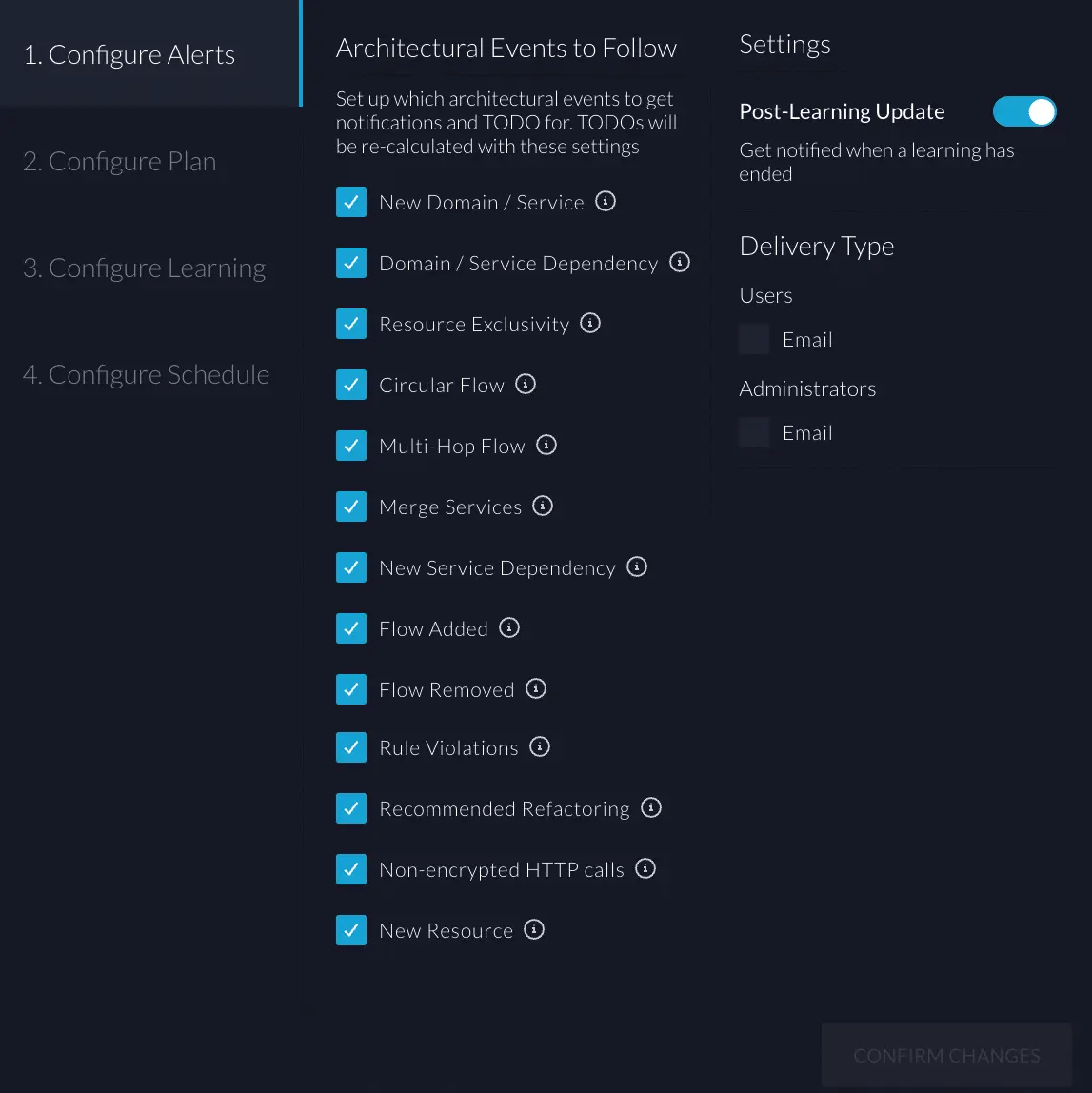Develop a baseline
Get a map of your application’s architecture and an initial tech debt report, establishing a baseline to measure drift against.

Gartner® Report: Tips for CIOs to Jump-Start Stalled Application Modernization Initiatives
Download NowCombat architectural drift in your distributed applications after each release with a real-time view of how each application changes over time. vFunction identifies architectural drift using the baseline you set, sending configurable auto-alerts for new architectural events.

Get a map of your application’s architecture and an initial tech debt report, establishing a baseline to measure drift against.

Observe dependencies between services and resources in your distributed applications. vFunction provides detailed insights into how to reduce new dependencies and get back on track with your refactoring and modularization efforts.

Customize your vFunction experience based on your organization’s goals and team requirements. Configure auto-alerts for new architectural events and decide how to prioritize your to-do lists based on your goals for engineering velocity, resiliency, cloud readiness, and scalability.

Learn firsthand how to leverage vFunction to prevent architectural drift.